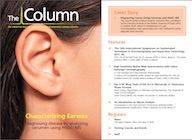The LCGC Blog: State of the Art in Microscale-LC Stationary Phase Formats
Kevin Schug delves into modern microscale liquid chromatography (LC) stationary phases.
turbomotion046/stock.adobe.com

Kevin Schug delves into modern microscale liquid chromatography (LC) stationary phases.
In an effort to better understand the current application potential of microscale liquid chromatography (micro-LC), I picked up a few recent review articles from the literature. What one immediately appreciates from glancing through the literature for such information is that there are a lot of different configurations and alternative formats, which can be placed under the micro-LC umbrella. I enjoyed reading reviews on openâtubular LC (1), LCâon-a-chip (2), the use of nanomaterials in LC (3), and LC separations on microfluidic devices (4), to name a few.
In general, there is an interest in moving to smaller scales because better kinetic and chromatographic performance is achievable. In recent years, significant commercial success has been realized by different commercial manufacturers, from both established and start-up companies, moving to smaller scales. Still, there is much that can be done to advance these smaller formats.
Taking LC from traditional analytical scale down to microscale brings with it several challenges. There are many different aspects to creating appropriate pumping, injection, separation, and detection systems at the microscale, including the fluidic connections between the components. If you are like me, and your primary experience with LC columns is stainless steel tubes packed with functionalized silica, then perhaps the most striking thing about the state-of-the-art in micro-LC is all of the different stationary phase types, which have been investigated.
Some advancements in stationary phases in micro-LC were born out of necessity. For example, packed beds require the use of frits to hold the packing in place. For capillaries and microfluidic devices, some special techniques are needed to create appropriate structures to accomplish this task. Thus, alternative approaches, such as porous-layer or wall-coated open-tubular, monolithic, or hybrid stationary phase architectures become attractive. Creating separation devices at a smaller scale also requires much less in terms of potentially costly materials, which could be used to create innovative stationary phases. As a result, a great deal of innovation has occurred, the vast majority of which is yet to be commercialized.
Open-tubular columns can achieve more favourable separation kinetics compared to packed beds, but the columns need to be less than 10–30 µm internal diameter in order for deleterious mass transfer effects not to dominate. Probably the greatest advancements in open-tubular LC have been in ion exchange separations. The multi-point adsorption of charged polymeric particles on the walls of small internal diameters capillaries or microfluidic channels is fairly straightforward and creates stationary phases that are very robust.
Open-tubular stationary phase development is a fertile ground for research; from metal-organic frameworks (MOF) to polymeric particles to various nanomaterial configurations, and combinations thereof, much has been investigated. The exceedingly high porosity and surface-to-volume ratio of MOFs have been reported to provide very high efficiency separations, up to 150,000 plates per metre. While ion exchange formats are perhaps more developed, a great deal of application base has to do with the type of detection available. Likely to drive further development of open-tubular separation formats will be more reliable interfacing to mass spectrometric detection, so that biological molecules from small sample aliquots can be reliably analyzed. Other detection systems are not specific enough for use in, for example, real-world proteomics applications.
A surprising amount of work has been performed in the development of nanomaterials as stationary phases. Nanomaterials have a wide range of favourable properties, including high surface-to-volume ratios, ease of functionalization, and wide pH stability. Their biggest drawback for their direct use is the high back pressure that can be expected to accompany pumped flows through packed beds of nanoparticles. Pumping through a packed bed of 50 nm particles requires a 10,000 times higher pressure than pumping through a bed of 5 µm particles. As a result, it is perhaps more reasonable to consider entraining nanoparticles in a hybrid framework; researchers have incorporated nanoparticles into monolithic phases and shown significant improvements in separations as a result.
Lab-on-a-chip or micro-total analysis systems have been attractive concepts for many decades. Beyond straightforward separations of molecules by LC, other onâchip components could include mixers, extraction phases, or reactor units. Still, many of the same considerations exist in terms of having the appropriate supporting peripherals (pumps, detectors, connections) available to make them function properly. The general consensus seems to be that incorporating these peripherals directly onto a lab-on-a-chip or micro-total analysis system is a big challenge. Extractions and separations are now quite straightforward with the plethora of strategies available; this is likely why you see more commercial manufacturers offering microscale separations as a component of a larger system, rather than seeking to create the instrument that will fit in the palm of your hand. That said, there have also been major recent advances in commercial portable LC systems in the recent past.
There has been an increasing interest in capillary-scale LC in the past five years. For many years, researchers have packed their own capillaries and stuck them in front of (or made them a part of) an electrospray ionization source. In that regard, it is very surprising that more commercial capillary LC columns aren’t currently available for purchase. Without some investment by a major player to create a robust capillary column line, such technology will not likely be adapted by major industries, such as pharmaceutical companies, who rely on a consistent technology being available from year to year. Along a similar vein, those commercial manufacturers who are beginning to offer chip-based LC formats will also likely have to supply all columns for their instrument, due to unique aspects of instrument construction. This will potentially stifle an industry that has prided itself on being able to use a very wide range of columns from many different manufacturers, some of which are better for some applications than others.
References
- S.C. Lam, E.S. Rodriguez, P.R. Haddad, and B. Paull, Analyst144, 3464–3482 (2019).
- F. Haghighi, Z. Talebour, and A.S. Nezhad, Trends Anal. Chem. 105, 302–337 (2018).
- M.R. Gama and C.B.G. Bottoli, In Nanomaterials in Chromatography, C.M. Hussain, Ed. (Elsevier, Inc., Amsterdam, The Netherlands, 2018), pp. 255–297.
- A. Kecskemeti and A. Gaspar, Anal. Chim. Acta1021, 1–19 (2018).
Kevin A. Schug is a Full Professor and Shimadzu Distinguished Professor of Analytical Chemistry in the Department of Chemistry and Biochemistry at The University of Texas (UT) at Arlington. He joined the faculty at UT Arlington in 2005 after completing a Ph.D. in chemistry at Virginia Tech under the direction of Prof. Harold M. McNair and a postdoctoral fellowship at the University of Vienna under Prof. Wolfgang Lindner. Research in the Schug group spans fundamental and applied areas of separation science and mass spectrometry. Schug was named the LCGC Emerging Leader in Chromatography in 2009 and the 2012 American Chemical Society Division of Analytical Chemistry Young Investigator in Separation Science. He is a fellow of both the U.T. Arlington and U.T. System-Wide Academies of Distinguished Teachers.
E-mail:kschug@uta.eduWebsite:www.chromatographyonline.com

The Next Frontier for Mass Spectrometry: Maximizing Ion Utilization
January 20th 2025In this podcast, Daniel DeBord, CTO of MOBILion Systems, describes a new high resolution mass spectrometry approach that promises to increase speed and sensitivity in omics applications. MOBILion recently introduced the PAMAF mode of operation, which stands for parallel accumulation with mobility aligned fragmentation. It substantially increases the fraction of ions used for mass spectrometry analysis by replacing the functionality of the quadrupole with high resolution ion mobility. Listen to learn more about this exciting new development.
Liquid Chromatography to Analyze Vitamin D Proteins in Psoriasis Patients
January 21st 2025Can a protein involved in delivering Vitamin D to target tissues have an altered serum profile in psoriasis patients with cardiovascular disease? Researchers used liquid chromatography (LC) to help find out.
The Complexity of Oligonucleotide Separations
January 9th 2025Peter Pellegrinelli, Applications Specialist at Advanced Materials Technology (AMT) explains the complexity of oligonucleotide separations due to the unique chemical properties of these molecules. Issues such as varying length, sequence complexity, and hydrophilic-hydrophobic characteristics make efficient separations difficult. Separation scientists are addressing these challenges by modifying mobile phase compositions, using varying ion-pairing reagents, and exploring alternative separation modes like HILIC and ion-exchange chromatography. Due to these complexities, AMT has introduced the HALO® OLIGO column, which offers high-resolution, fast separations through its innovative Fused-Core® technology and high pH stability. Alongside explaining the new column, Peter looks to the future of these separations and what is next to come.
A Guide To Finding the Ideal Syringe and Needle
January 20th 2025Hamilton has produced a series of reference guides to assist science professionals in finding the best-suited products and configurations for their applications. The Syringe and Needle Reference Guide provides detailed information on Hamilton Company’s full portfolio of syringes and needles. Everything from cleaning and preventative maintenance to individual part numbers are available for review. It also includes selection charts to help you choose between syringe terminations like cemented needles and luer tips.